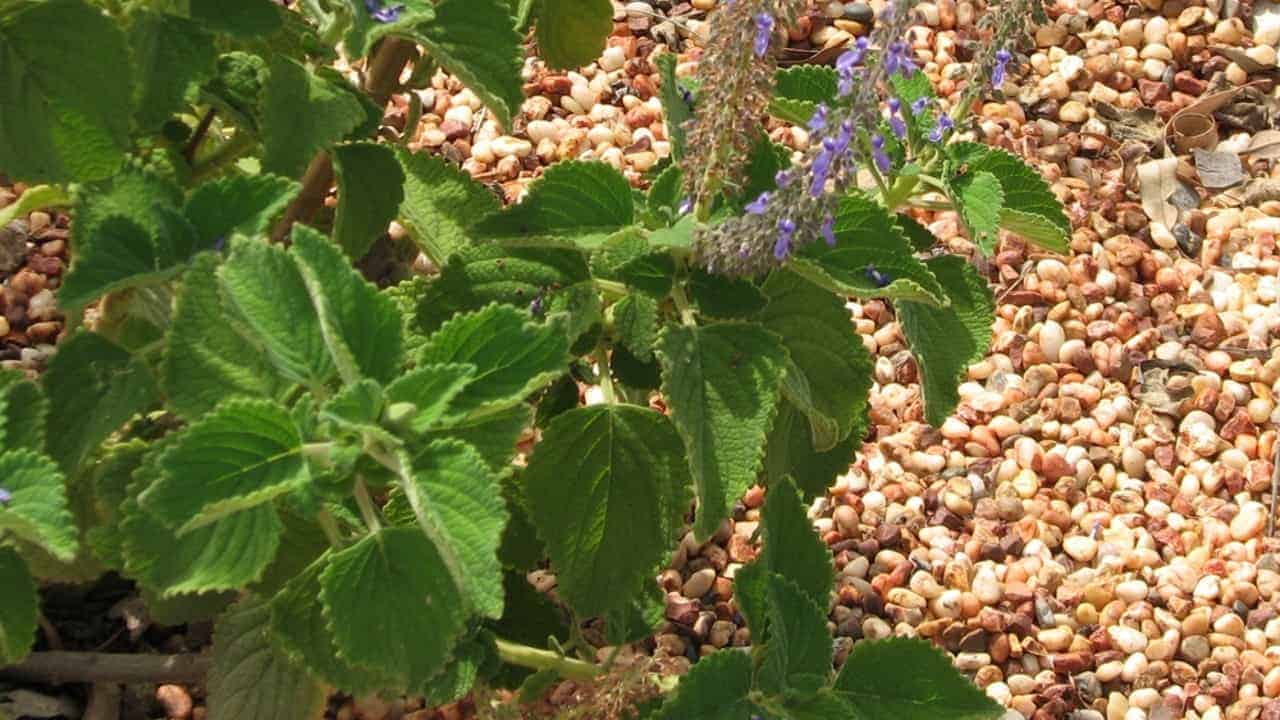Bush Basil
Plectranthus graveolens
Bush Basil (aka. Native Coleus, Mountain Plectranthus, Sticky Cockspur) was traditionally used as a medicinal and ceremonial herb. Early European settlers called it the “Five Spice Plant” for its complex aroma, reminiscent of basil, mint and sage. This species occurs naturally in rocky mountain and rainforest terrain from the Cape York Peninsula (QLD) to southeast New South Wales.
Although it’s a type of mint, Bush Basil is strongly aromatic and somewhat resembles basil, complimenting Mediterranean flavours like tomato and garlic. Scatter fresh leaves on pizza or caprese salad, or toss small amounts into a blender with pine nuts and olive oil for a fragrant, homemade pesto.
To harvest, pluck the young leaves off the plant throughout the growing season. Small new Leaves may be used fresh, or desiccated for later use — keep in mind the aroma and flavour in harvested leaves will fade over time.
Grow Native Basil in full sun to partly shaded conditions, in a freely draining soil. Though it will tolerate sandy soil and low nutrient levels, a loamy potting mix with plenty of organic matter will yield a better harvest. This species produces broad, fuzzy leaves throughout the year, with slender clusters of tiny purple/blue flowers during warmer months.
A low-growing shrub, Native Basil can reach up to 1.5m tall with a 2m spread. It’s suitable for both garden beds and pots, perfect for filling gaps, adorning edges, occupying narrow beds, or decorating balcony gardens and railings.
Should I fertilise my Native Basil plant?
Native mints don’t tend to need much fertiliser, but adding organic matter to the soil in Spring should yield plentiful harvests throughout the growing season.
What pests attack Native Basil?
Like with exotic mints and basils, you may often find cabbage moths, caterpillars, snails and slugs helping themselves during Spring and Autumn. Pick these off individually, or Beer traps can be very effective at luring snails and slugs away from your homegrown herbs.
Is there an optimal time for pruning my Native Basil?
No, you can prune (and harvest) this plant any time of year. Regular trimming is required to keep a compact shape.
This Plant Is Available As A Dried Herb From Our Shop

Suitable for full-sun

Suitable for part-shade

Suitable for pots

Dimensions:
Height 1.5m
Width 2m

Tolerates drought

Tolerates sandy soils

Attracts bees & insects

Suitable for gaps

